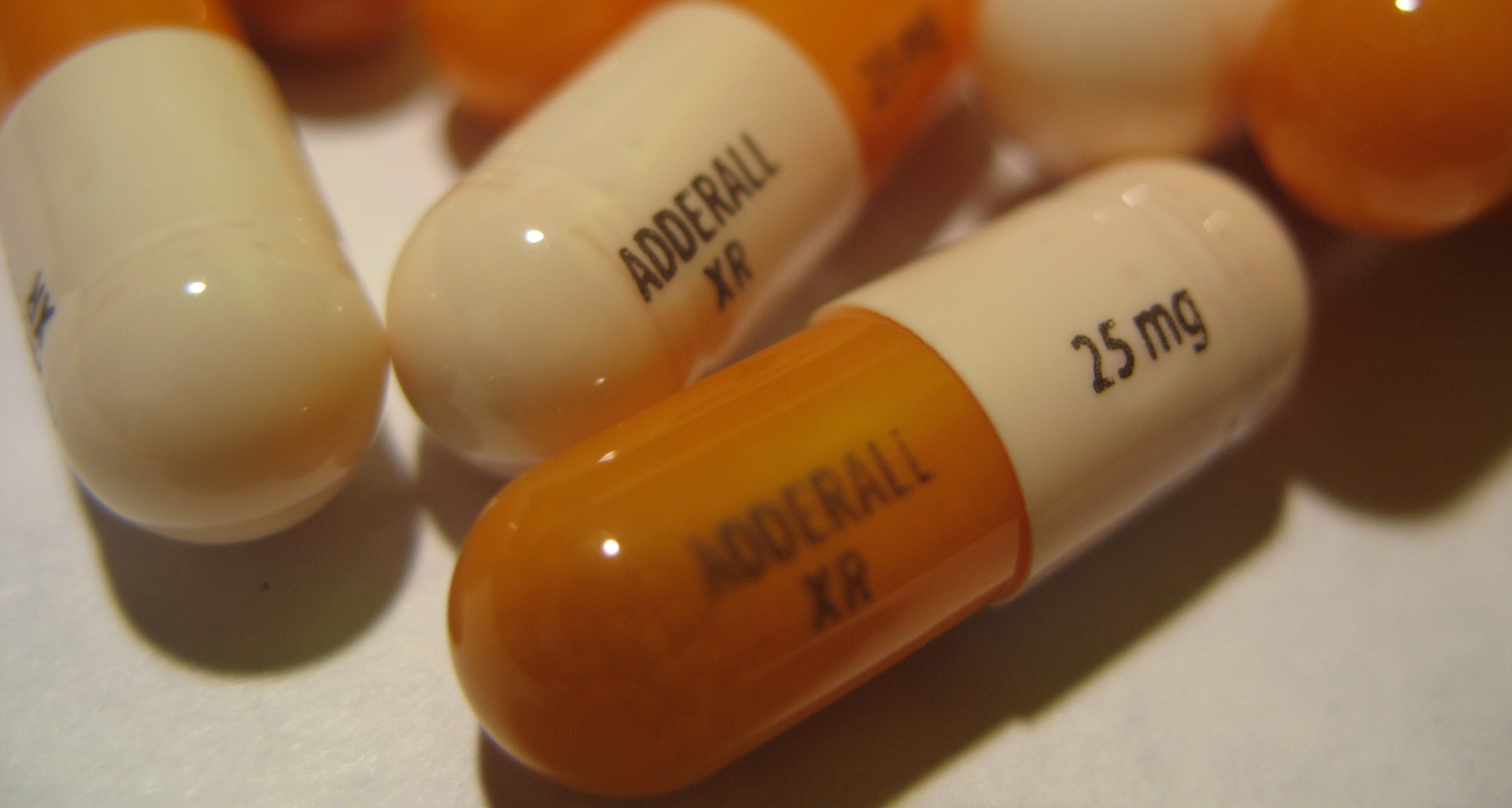Adderall. Perhaps you know someone who takes it; perhaps you take it yourself. Or maybe you are just curious, as many are, about the drug-its side effects, purposes, and place in our society.
Adderall is a phenylethylamine-class drug constituted from a mixture of amphetamine and dextroamphetamine used to treat attention deficit hyperactivity disorder (ADHD) and narcolepsy. Amphetamine and dextroamphetamine are central nervous system stimulants that affect chemicals in the brain and nerves that contribute to hyperactivity and impulse control. The actual chemical parts of this drug are four active ingredients that each make up an even 25 percent portion of the drug-dextroamphetamine saccharate, dextroamphetamine sulfate, amphetamine aspartate monchydrate, and amphetamine sulfate. In addition to the active ingredients, there are a number of inactive ingredients, however the four aforementioned amphetamine-based salts above give Adderall its results. Prescriptions are given in either 5, 10, 15, 20, 25, or 30 mg doses.
This drug was actually originally primarily used as a weight-loss remedy in the 1960’s, and at the time was known as Obetrol. Obetrol was never really popular and eventually was not profitable enough to stay on the market. Thus, in 1994, Rexar Pharmaceuticals sold the formula rights to Richwood, now known as Shire Richwood. By the time 1996 rolled around, the FDA had approved Adderall for treatment of ADHD in children. Adderall was first introduced in instant-release capsules, and later was made available in an extended-release type as well (the only difference being the amount of time in which they are released into the body).
Common side effects of the drug include:
- Nausea
- Appetite loss
- Stomach pain
- Dry mouth
- Anxiety
- Agitation
- Mood shifts
- Insomnia
- Headaches
- Dizziness/weakness
Adderall is highly addictive and has been taken recreationally, with many adolescents taking the drug as what they think of as a “safe alternative” to cocaine, which it is clearly not. Dangerous side effects of recreational Adderall use include heart arrhythmia, psychotic episodes, respiratory complications, increased aggression, toxic shock, and even death. Many college students use the stimulant-natured drug as a study aid, so that they can stay awake longer and concentrate better, which is both hazardous and illegal. Adderall is considered a gateway drug (when used recreationally) by some psychologists, due to it affecting the same areas of the brain as methamphetamine and cocaine.

Adderall is an important drug used mainly to treat ADHD, although also as a treatment for narcolepsy. It is highly addictive and recreational usage is not recommended.
—————————————————————————————————————————————–
